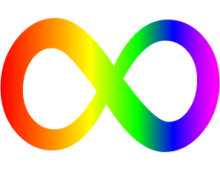With five generations together in U.S. workplaces for the first time (Traditionalists, Baby Boomers, Generation Xers, Millennials, and Gen Z), communication styles and cultural differences between the generations are emerging. According to NPR, there are even generational differences in how emojis are interpreted. Take for example the “thumbs up” emoji, “older people” literally interpret this as an affirmative/yes, but “younger people” see this as passive-aggressive and even a close cousin of the middle finger!
While many organizations are renewing their diversity efforts, according to Gentelligence only 8% of organizations include age as a part of their DEI strategy. And organizations that do address it often simply encourage generations to focus on their similarities denying their differences altogether.
A multi-generational workforce has an ability to blend the unique experiences and skill sets of each generation into one shared mission. However, with this blending can come some challenges, especially when it becomes evident that each generation possesses a different mindset and attitude about work.
If you are affiliated with the NIH, you can watch a great seminar by Lynne Lancaster on What a Difference a Generation Makes here.
She addresses questions like: who are the Traditionalists, Baby Bommers, Generation Xers, and Millennials in today’s workplace and what makes them tick? How are generation gaps creating bottom line strategic issues when it comes to recruiting, retaining, and managing the generations? And more.
If you aren’t at the NIH, but are interested in learning more about generational differences in the workforce, the book Gentelligence lays out a framework for moving colleagues away from generational conflict and toward a productive embrace of differences. The authors suggest four main practices including: 1. Identify your assumptions 2. Adjust your lens 3. Take advantage of differences and embrace mutual learning 4. Guide people to share knowledge and expertise to they can grow together. According to authors, “We have become so entrenched in generational name-calling — or, conversely, so focused on downplaying the differences that do exist — that we have forgotten there is strength in age diversity. Especially at a time when we are wrestling with so many changes to the way we work, it’s incumbent on leaders to embrace intergenerational teams as a key piece of the DEI puzzle and to frame them as an opportunity to be seized rather than a threat to be managed.”




